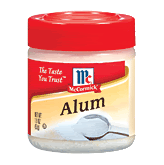rake60
Well-Known Member
- Joined
- Jul 8, 2007
- Messages
- 4,756
- Reaction score
- 125
I had read several notes on this subject and decided to try it for myself.
A broken tap really can be dissolved from a non ferrous part.
Its a simple but time consuming method of simmering the part in a
saturated solution of alum in water. My test piece was a scrapped aluminum
flywheel with a 2-56 tap broken off in an angled hole through the hub that was
intended to accept the set screw. After simmering in the alum solution
for about an hour and a half the outer edges of the tap turned to a rusty sludge
and it pushed out of the hole without any damage to the part.
For the size of the stock and time it took to make my test piece this process
would have been more or less a waste of time, but I had to see for myself
if it would actually work. It does quite nicely.
A broken tap really can be dissolved from a non ferrous part.
Its a simple but time consuming method of simmering the part in a
saturated solution of alum in water. My test piece was a scrapped aluminum
flywheel with a 2-56 tap broken off in an angled hole through the hub that was
intended to accept the set screw. After simmering in the alum solution
for about an hour and a half the outer edges of the tap turned to a rusty sludge
and it pushed out of the hole without any damage to the part.
For the size of the stock and time it took to make my test piece this process
would have been more or less a waste of time, but I had to see for myself
if it would actually work. It does quite nicely.






